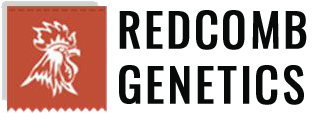The Eskildsen breeding centre in Koningswartha, Saxony, Germany
The Eskildsen goose breeding and production company is a family business started up in Northern Germany region called Dithmarschen. It is on the western coast of the Jutland Peninsula from the Eider River in the north to the Elbe River in the south. This region was reclaimed from the sea and settled at the beginning of the first millennium AD. It now consists of salt marshes and low-lying land suitable for grazing farm livestock. The land in the region is suitable for extensive farming of sheep cattle and horses. Farmers in the region who farm sheep also farm geese. In spring the farmers bring sheep out of housing and graze them on the water grass followed by the geese. This has been the practice for hundreds of years.
The Eskildsen company has built on the traditions of geese breeding from the Dithmarshcen region, geese breeding in Denmark (the Legarth company) and geese farming in the Saxony region of Upper Lustian. This area also is the site of a Unecso Biosphere Reserve of 30,100 ha for Heath and Ponds Landscape, and in particular for the protection of otters. Breeding the Eskildsen geese began in 1955 when Jens Eskildsen started his goose farm in Gudendorf. He used local Danish Geese that were known for strong legs and feet, were very heavy and able to roam over a large territory. The selection program was aimed at producing an optimum meat-to-bone ratio at market age. All the geese were bred on free range and were only dry-plucked. Dry plucking enhanced the goose taste in contrast to imports from Poland or Hungary that were wet plucked leading to a great loss in taste. These lines were named the Dithmarscher.
Following German unification in 1990 the Eskildsens met Dr K-H Schnider a specialist geese geneticist at the Univerity of Leipzig who had developed lines of geese from traditional geese in the Upper Lustian area and were named Lippitscher. The ideas of Dr Schneider on geese breeding and the marketing ideas of the Eskildens came together and a new kind of goose was developed based on the Dithmarscher and the Lippitscher with emphasis on meat yield. This goose line was named the Holsteiner.
The company has three main farms. The breeding centre is in Koningswartha in the Upper Lustian regions. Two parent farms are located in Wermsdorf and Gudendorf. At Wermsdorf all the commercial progeny are delivered around Germany while at Gudendorf goslings are sent to farmers with a Eskildsen growing contract. These contract growing farms are located in the Neuseddin area close to the company processing plant. The geese are dry plucked for the German supermarkets.
Approximately 250,000 goslings are processed at Neusidden and another 500,000 are processed at other plants around Germany. Some parent stock are exported to Canada, Britain, South Africa, Hungary and Russia.


